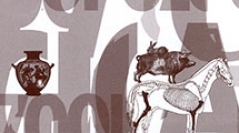

 Anthropozoologica
43 (2) - Pages 7-37
Anthropozoologica
43 (2) - Pages 7-37The site of Kutná Hora-Denemark (3 444 bones or bone fragments identified) shows, contrary to most of the other seventeen Early and Middle Eneolithic sites in the Bohemian basin, a high percentage of hunted animals (more than a half). Aurochs are widely represented among 918 bovine bones. Besides metrically reliably determined aurochs and domestic cattle there is a high quota (almost a half) of intermediate sized bones, which could belong to: (1) large domestic males, (2) female aurochs or to (3) cross-breeds of both forms or to locally domesticated cattle. Some proposed indications support the third hypothesis. The theoretical aspect of the problem is discussed at first (summary of knowledge concerning aurochs; body size; variability components; domestication). The subsequent analysis is based mainly on metric evaluation of twelve width measurements on long limb bones and phalanges (in total 483 data). This study contributes to the long standing debate concerning the local domestication/crossbreeding of wild and domestic animals in Central Europe, i.e. outside the main domestic centre in the Near East.
Aurochs, Bos primigenius, Bos taurus, central Europe, Czech Republic, Kutná Hora-Denemark, osteometry, intermediate form, crossbreeding, local domestication.